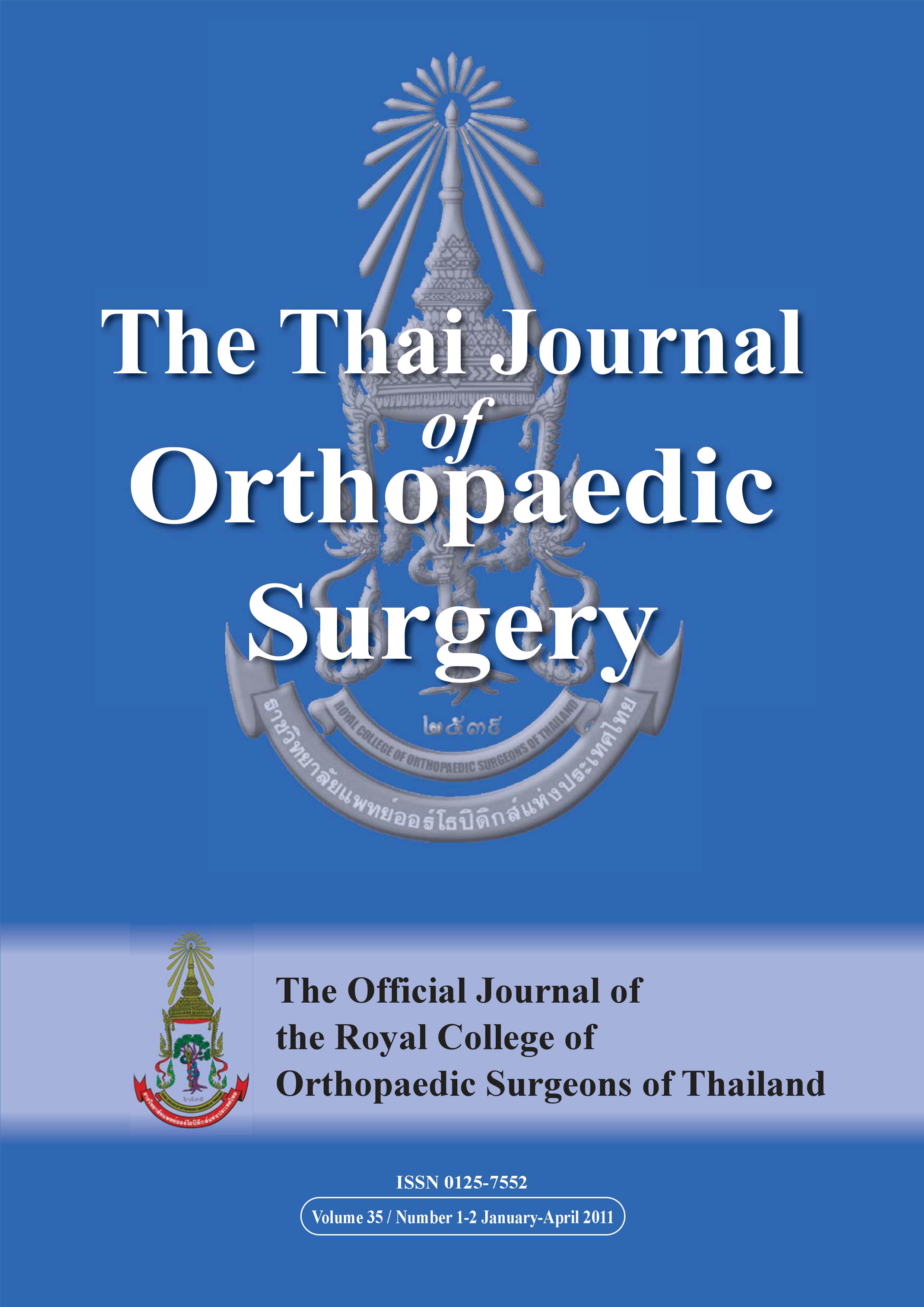Reliability and accuracy of roentgenographic measures in determining the degree of comminution of femoral shaft fractures
Main Article Content
Abstract
Objective: The aim of this study was to evaluate both the reliability and accuracy of plain and high resolution radiographs in determining the degree of comminution of femoral fractures.
Methods: Eighteen patients were selected for evaluation of femoral fracture using plain and high resolution radiography, followed by computerized tomography (CT) with reconstruction. Three groups of assessors included four orthopedic members of staff, four senior residents, and four junior residents (first and second year). Consensus agreement of the staff reading the CT scans was considered as “the gold standard”.
Results: The accuracy in determining the degree of comminution of plain radiography was 45.8%, 70.8% and 70.8% for junior resident, senior resident and staff, respectively. Those for high resolution radiography were 50.0%, 68.0% and 73.6%. Interobserver reliability in both plain and high resolution radiography was moderate in both the senior resident and staff groups, but only fair among the junior residents. The intraobserver reliability in the staff group was substantial in both types of x-rays.
Conclusion: The difference in accuracy and reliability between plain and high resolution radiographs is marginal when used to define the degree of comminution of femoral shaft fracture, except when interpreted by assessors with less experience.
Article Details
References
2. Canale ST. Campbell’s Operative Orthopaedics. 10th ed. Philadelphia: Mosby 2003; 2725-872.
3. Anand SD. Open reamed femoral intramedullary nailing-revisited. Eastern J Med 2003; 8: 7-11.
4. Arazi M, Oqun TC, Oktar MN, Memik R, Kutlu A. Early weight-bearing after statically locked reamed intramedullary nailing of comminuted femoral fractures: is it a safe procedure?. J Trauma 2001; 50: 711-6.
5. Brumback RJ, Reilly JP, Poka A, Lakatos RP, Bathon GH, Burgess AR. Intramedullary nailing of femoral shaft fractures. part I: decision-making errors with interlocking fixation. J Bone Joint Surg (Am) 1988; 70: 1441-52.
6. Brumback RJ, Uwagie-Ero S, Lakatos RP, Poka A, Bathon GH, Burgess AR. Intramedullary nailing of femoral shaft fractures. part II: fracture-healing with static interlocking fixation. J Bone Joint Surg (Am) 1988; 70: 1453-62.
7. Medoff RJ. Insertion of the distal screws in interlocking nail fixations of femoral shaft fractures.Technical note. J Bone Joint Surg (Am) 1986; 68: 1275-7.
8. Winquist RA, Hansen ST Jr. Comminuted fractures of the femoral shaft treated by intramedullary nailing. Orthop Clin North Am 1980; 11: 633-48
9. Landis JR, Koch GG. The measurement of observer agreement for categorical data. Biometrics 1977; 33: 159-74.
10. Garbuz D, Masri B, Esdaile J, Duncan C. Classification systems in orthopaedics. J Am Acad Orthop Surg 2002; 10: 290-7.
11. Hooper GJ, Lyon DW. Closed unlocked nailing for comminuted femoral fractures. J Bone Joint Surg (Br) 1988; 70: 619-21.
12. Winquist RA, Hansen ST, Clawson DK. Closed intramedullary nailing of femoral fractures. A report of five hundred and twenty cases. J Bone Joint Surg Am 1984; 66: 529-39.


